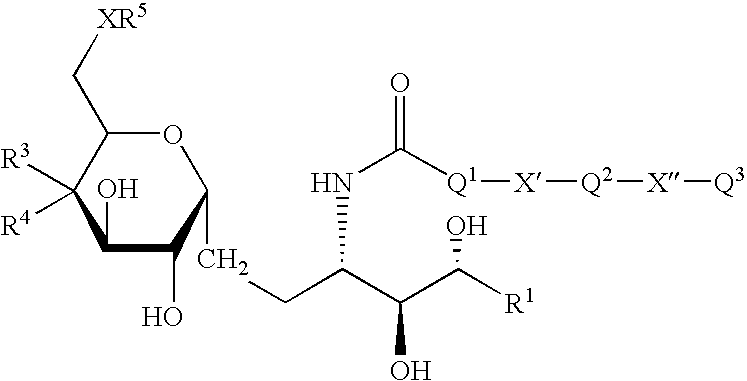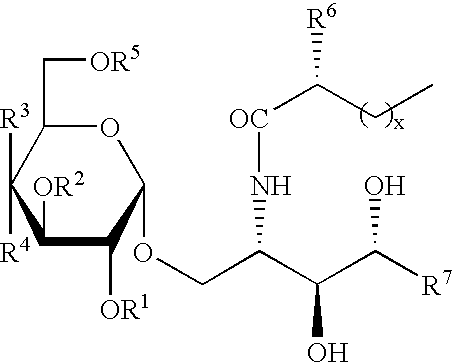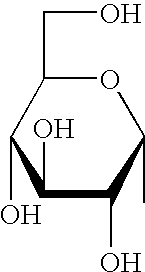Synthetic C-glycolipid and its use for treating cancer, infectious diseases and autoimmune diseases
a c-glycolipid, synthetic technology, applied in the direction of antiparasitic agents, drug compositions, immunological disorders, etc., can solve the problem of unclear potential role of nkt cells in the development of adaptive immune responses, and achieve the effect of improving stability in vivo
- Summary
- Abstract
- Description
- Claims
- Application Information
AI Technical Summary
Benefits of technology
Problems solved by technology
Method used
Image
Examples
Embodiment Construction
[0236] .alpha.-Galactosylceramide was synthesized by Kirin Brewery (Gumma, Japan). The stock solution was dissolved in a 0.5% polysorbate-20 (Nikko Chemical, Tokyo), 0.9% NaCl solution at a concentration of 200 .mu.g / ml, and diluted in PBS just before injection into mice. .alpha.-C-galactosylceramide was synthesized as described herein. The stock solution was originally dissolved in 100% DMSO at a concentration of 1 mg / ml. Before injection into mice, it was diluted to a concentration of 200 .mu.g / ml in a 0.5% polysorbate-20 (Nikko Chemical, Tokyo), 0.9% NaCl solution, and diluted in PBS just before injection into mice.
[0237] Six to eight-week-old female BALB / c mice were purchased from the National Cancer Institute (Bethseda, Md.). Six to eight-week-old female C57 / BL6 mice were purchased from the Jackson Laboratory (Bar Harbor, Me.). CD1d-deficient mice and J.alpha.18-deficient mice were obtained as gifts. IFN-.gamma.-deficient mice of BALB / c background were purchased from the Jackso...
PUM
| Property | Measurement | Unit |
|---|---|---|
| by weight | aaaaa | aaaaa |
| temperature | aaaaa | aaaaa |
| reaction time | aaaaa | aaaaa |
Abstract
Description
Claims
Application Information
 Login to View More
Login to View More - R&D
- Intellectual Property
- Life Sciences
- Materials
- Tech Scout
- Unparalleled Data Quality
- Higher Quality Content
- 60% Fewer Hallucinations
Browse by: Latest US Patents, China's latest patents, Technical Efficacy Thesaurus, Application Domain, Technology Topic, Popular Technical Reports.
© 2025 PatSnap. All rights reserved.Legal|Privacy policy|Modern Slavery Act Transparency Statement|Sitemap|About US| Contact US: help@patsnap.com



